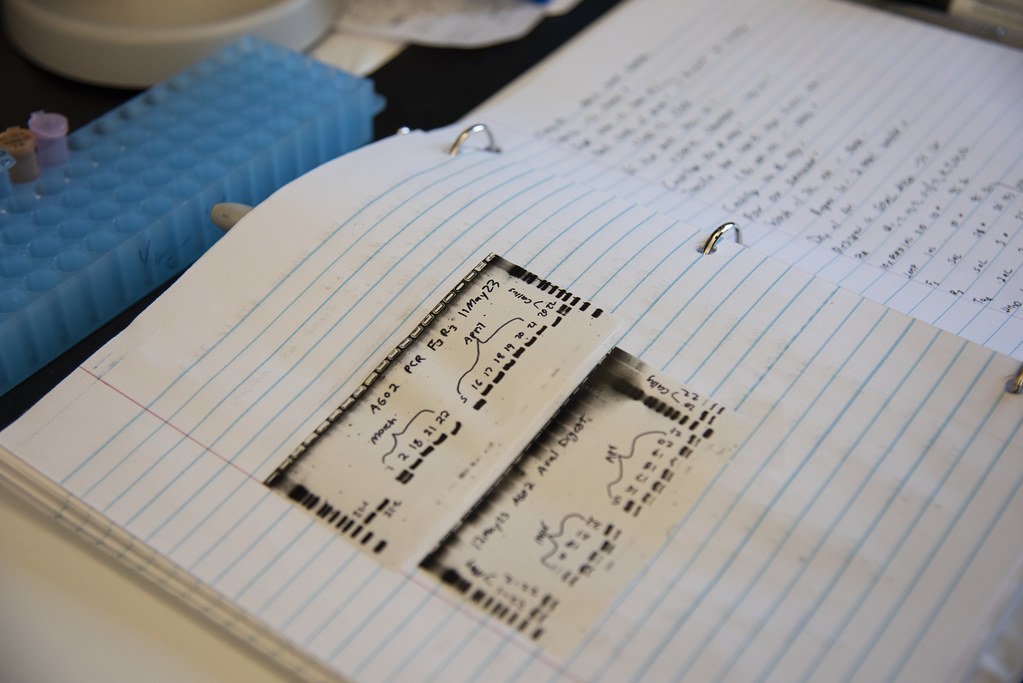It all started with the glow of a blacklight.
In a simple experiment in high school biology, DNA from a jellyfish was put into the bacteria E. coli demonstrating the basics of genetic engineering.
Saad Raza was hooked. Science became something that would fascinate and inspire him simultaneously.
“I just thought that was the coolest thing in the world, and that was what got me into science,” Raza said.
Raza, a member of the Bing Yang lab, sharpens his skills in the lab using various techniques to edit the genetic components within rice plants. He compares his work to the science fiction film Jurassic Park. The movie follows scientists who find out firsthand the results of cloning, which Raza deals with daily.
This fascination with gene editing and cloning pushed Raza to choose a lab that utilizes CRISPR technology to edit and create cell models in a timely manner. The Yang lab has recently been working with a new CRISPR technique called prime editing. Prime editing is the next generation of genetic engineering due to its ability to make a wider range of gene edits.
“CRISPR, in its basic form, is like a pair of molecular scissors,” Raza said. “The difference between regular CRISPR and prime editing would be that, in addition to these scissors, you’ve also got the tape and glue to put it all together.”
Raza earned his bachelor’s degree in microbiology from the University of Alabama and is now a first-year Ph.D. graduate student in plant science at the University of Missouri. His first year was spent learning the techniques the Yang lab employs to edit DNA.
“When you learn about how cells work, how intricate and precise they are and all the things that have to go right in order for life to happen,” Raza said, “And, then you see that you can change that. It’s really awe-inspiring.”
As temperatures rise across the globe, it is becoming more important than ever to secure our food supply. High heat reduces the grain yield of rice, which means that if the plant gets too hot, it will die. Raza hopes that his experiments with rice will one day help people around the world retain reliable access to quality, nutritious food.
One way to achieve this goal is to study the broad diversity of the genes within the rice pan-genome, or the collective set of genes, and alter certain components within it. Prime editing allows Raza to make specific edits to the genetic information that he wants.
The Yang lab aims to use this technology to convert genes from American rice into African rice varieties without needing to cross breed the two. If the tests are fruitful, it could one day help stabilize the grain yield and help rice become a more available option for many.

The work isn’t always as smooth as it seems, though. Raza must pick himself up after challenges that are often part of the job description, such as frequent fluctuations in experiment results.
“Some weeks are slower, some are busier. Right now, we just had a bunch of stuff that didn’t quite work, so we had to start over,” Raza said. “There’s always something new, whether it be a new problem or a wrinkle that comes up in the experiment.”

With these obstacles comes a chance for Raza to practice balancing his work life and his social life. He normally goes to the gym after work, but when those facilities closed during the pandemic, he had to quickly find a different outlet. Now, he plays tennis with his friends after work or on the weekends to decompress for the day.
“It’s a lot of fun when you’re just out there with a couple of friends trash-talking each other and just having a good time,” Raza said. “We don’t take it too seriously.”
Back in his hometown of St. Louis, Raza would spend his time volunteering with the local community by feeding the hungry and the needy, a sentiment that he continues in a different way with his lab work.
“It feels like every day I am chipping away at these problems. Hopefully, every day I make a little bit of progress, and over the course of my career I can make a big impact,” Raza said.
Climate change will affect many crops in various ways due to rising and falling temperatures. CRISPR technology could lead to more nutritious foods by making those crops more resilient to these changes. With each new result, Raza hopes to address newfound concerns over climate change affecting crop yield and help others with his lab work.


